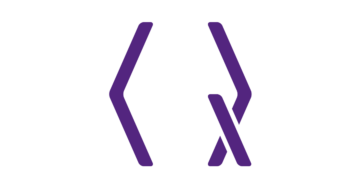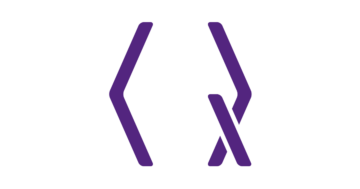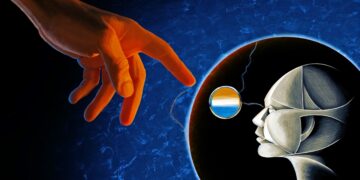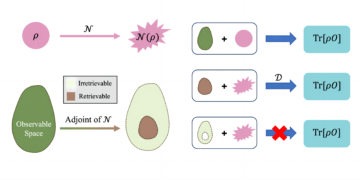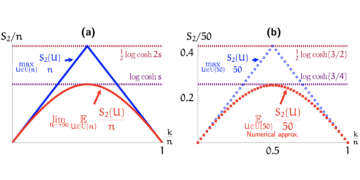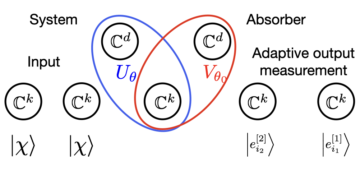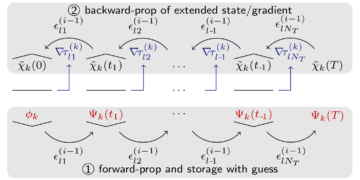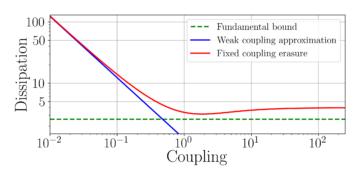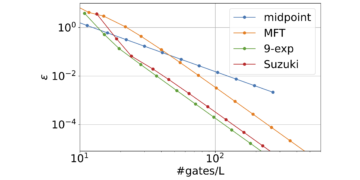1Vector Institute, MaRS Centre, Toronto, Ontario, M5G 1M1, Canada
2Department of Physics and Astronomy, University of Waterloo, Ontario, N2L 3G1, Canada
3Department of Physics and Astronomy, University College London, London WC1E 6BT, United Kingdom
4Xanadu, Toronto, ON, M5G 2C8, Canada
Find this paper interesting or want to discuss? Scite or leave a comment on SciRate.
Abstract
Variational quantum algorithms use non-convex optimization methods to find the optimal parameters for a parametrized quantum circuit in order to solve a computational problem. The choice of the circuit ansatz, which consists of parameterized gates, is crucial to the success of these algorithms. Here, we propose a gate which fully parameterizes the special unitary group $mathrm{SU}(N)$. This gate is generated by a sum of non-commuting operators, and we provide a method for calculating its gradient on quantum hardware. In addition, we provide a theorem for the computational complexity of calculating these gradients by using results from Lie algebra theory. In doing so, we further generalize previous parameter-shift methods. We show that the proposed gate and its optimization satisfy the quantum speed limit, resulting in geodesics on the unitary group. Finally, we give numerical evidence to support the feasibility of our approach and show the advantage of our gate over a standard gate decomposition scheme. In doing so, we show that not only the expressibility of an ansatz matters, but also how it’s explicitly parameterized.

Featured image: Rethinking the parameterization of general unitary gates.
Our code is freely available on Github:
https://github.com/dwierichs/Here-comes-the-SUN
There is a Demo that illustrates some of the key points of the paper:
https://pennylane.ai/qml/demos/tutorial_here_comes_the_sun/
Popular summary
► BibTeX data
► References
[1] M. Cerezo, Andrew Arrasmith, Ryan Babbush, Simon C. Benjamin, Suguru Endo, Keisuke Fujii, Jarrod R. McClean, Kosuke Mitarai, Xiao Yuan, Lukasz Cincio, and Patrick J. Coles. “Variational quantum algorithms”. Nature Reviews Physics 3, 625–644 (2021).
https://doi.org/10.1038/s42254-021-00348-9
[2] Jules Tilly, Hongxiang Chen, Shuxiang Cao, Dario Picozzi, Kanav Setia, Ying Li, Edward Grant, Leonard Wossnig, Ivan Rungger, George H. Booth, and Jonathan Tennyson. “The Variational Quantum Eigensolver: A review of methods and best practices”. Physics Reports 986, 1–128 (2022).
https://doi.org/10.1016/j.physrep.2022.08.003
[3] Jun Li, Xiaodong Yang, Xinhua Peng, and Chang-Pu Sun. “Hybrid Quantum-Classical Approach to Quantum Optimal Control”. Phys. Rev. Lett. 118, 150503 (2017).
https://doi.org/10.1103/PhysRevLett.118.150503
[4] K. Mitarai, M. Negoro, M. Kitagawa, and K. Fujii. “Quantum circuit learning”. Phys. Rev. A 98, 032309 (2018).
https://doi.org/10.1103/PhysRevA.98.032309
[5] Maria Schuld, Ville Bergholm, Christian Gogolin, Josh Izaac, and Nathan Killoran. “Evaluating analytic gradients on quantum hardware”. Phys. Rev. A 99, 032331 (2019).
https://doi.org/10.1103/PhysRevA.99.032331
[6] Gavin E. Crooks. “Gradients of parameterized quantum gates using the parameter-shift rule and gate decomposition” (2019) arXiv:1905.13311.
arXiv:1905.13311
[7] Artur F. Izmaylov, Robert A. Lang, and Tzu-Ching Yen. “Analytic gradients in variational quantum algorithms: Algebraic extensions of the parameter-shift rule to general unitary transformations”. Phys. Rev. A 104, 062443 (2021).
https://doi.org/10.1103/PhysRevA.104.062443
[8] David Wierichs, Josh Izaac, Cody Wang, and Cedric Yen-Yu Lin. “General parameter-shift rules for quantum gradients”. Quantum 6, 677 (2022).
https://doi.org/10.22331/q-2022-03-30-677
[9] Oleksandr Kyriienko and Vincent E. Elfving. “Generalized quantum circuit differentiation rules”. Phys. Rev. A 104, 052417 (2021).
https://doi.org/10.1103/PhysRevA.104.052417
[10] Dirk Oliver Theis. “”Proper” Shift Rules for Derivatives of Perturbed-Parametric Quantum Evolutions”. Quantum 7, 1052 (2023).
https://doi.org/10.22331/q-2023-07-11-1052
[11] Lucas Slattery, Benjamin Villalonga, and Bryan K. Clark. “Unitary block optimization for variational quantum algorithms”. Phys. Rev. Research 4, 023072 (2022).
https://doi.org/10.1103/PhysRevResearch.4.023072
[12] Jin-Guo Liu, Yi-Hong Zhang, Yuan Wan, and Lei Wang. “Variational quantum eigensolver with fewer qubits”. Phys. Rev. Research 1, 023025 (2019).
https://doi.org/10.1103/PhysRevResearch.1.023025
[13] Abhinav Kandala, Antonio Mezzacapo, Kristan Temme, Maika Takita, Markus Brink, Jerry M. Chow, and Jay M. Gambetta. “Hardware-efficient variational quantum eigensolver for small molecules and quantum magnets”. Nature 549, 242–246 (2017).
https://doi.org/10.1038/nature23879
[14] Navin Khaneja and Steffen J. Glaser. “Cartan decomposition of $SU(2^n)$and control of spin systems”. Chemical Physics 267, 11–23 (2001).
https://doi.org/10.1016/S0301-0104(01)00318-4
[15] Barbara Kraus and Juan I Cirac. “Optimal creation of entanglement using a two-qubit gate”. Physical Review A 63, 062309 (2001).
https://doi.org/10.1103/PhysRevA.63.062309
[16] Farrokh Vatan and Colin Williams. “Optimal quantum circuits for general two-qubit gates”. Phys. Rev. A 69, 032315 (2004).
https://doi.org/10.1103/PhysRevA.69.032315
[17] Farrokh Vatan and Colin P Williams. “Realization of a general three-qubit quantum gate” (2004). arXiv:quant-ph/0401178.
arXiv:quant-ph/0401178
[18] Juha J. Vartiainen, Mikko Möttönen, and Martti M. Salomaa. “Efficient Decomposition of Quantum Gates”. Phys. Rev. Lett. 92, 177902 (2004).
https://doi.org/10.1103/PhysRevLett.92.177902
[19] Domenico D’Alessandro and Raffaele Romano. “Decompositions of unitary evolutions and entanglement dynamics of bipartite quantum systems”. Journal of Mathematical Physics 47, 082109 (2006).
https://doi.org/10.1063/1.2245205
[20] Alwin Zulehner and Robert Wille. “Compiling SU(4) Quantum Circuits to IBM QX Architectures”. In Proceedings of the 24th Asia and South Pacific Design Automation Conference. Page 185–190. ASPDAC ’19New York, NY, USA (2019). Association for Computing Machinery.
https://doi.org/10.1145/3287624.3287704
[21] B. Foxen, C. Neill, A. Dunsworth, P. Roushan, B. Chiaro, A. Megrant, J. Kelly, Zijun Chen, K. Satzinger, R. Barends, F. Arute, K. Arya, R. Babbush, D. Bacon, J. C. Bardin, S. Boixo, D. Buell, B. Burkett, Yu Chen, R. Collins, E. Farhi, A. Fowler, C. Gidney, M. Giustina, R. Graff, M. Harrigan, T. Huang, S. V. Isakov, E. Jeffrey, Z. Jiang, D. Kafri, K. Kechedzhi, P. Klimov, A. Korotkov, F. Kostritsa, D. Landhuis, E. Lucero, J. McClean, M. McEwen, X. Mi, M. Mohseni, J. Y. Mutus, O. Naaman, M. Neeley, M. Niu, A. Petukhov, C. Quintana, N. Rubin, D. Sank, V. Smelyanskiy, A. Vainsencher, T. C. White, Z. Yao, P. Yeh, A. Zalcman, H. Neven, and J. M. Martinis. “Demonstrating a Continuous Set of Two-Qubit Gates for Near-Term Quantum Algorithms”. Phys. Rev. Lett. 125, 120504 (2020).
https://doi.org/10.1103/PhysRevLett.125.120504
[22] E Groeneveld. “A reparameterization to improve numerical optimization in multivariate REML (co) variance component estimation”. Genetics Selection Evolution 26, 537–545 (1994).
https://doi.org/10.1186/1297-9686-26-6-537
[23] Tapani Raiko, Harri Valpola, and Yann Lecun. “Deep learning made easier by linear transformations in perceptrons”. In Neil D. Lawrence and Mark Girolami, editors, Proceedings of the Fifteenth International Conference on Artificial Intelligence and Statistics. Volume 22 of Proceedings of Machine Learning Research, pages 924–932. La Palma, Canary Islands (2012). PMLR. url: https://proceedings.mlr.press/v22/raiko12.html.
https://proceedings.mlr.press/v22/raiko12.html
[24] Sergey Ioffe and Christian Szegedy. “Batch normalization: Accelerating deep network training by reducing internal covariate shift”. In International conference on machine learning. Pages 448–456. PMLR (2015).
https://doi.org/10.5555/3045118.3045167
[25] Tim Salimans and Durk P Kingma. “Weight normalization: A simple reparameterization to accelerate training of deep neural networks”. In Advances in neural information processing systems. Volume 29. (2016).
https://doi.org/10.48550/arXiv.1602.07868
[26] Robert Price. “A useful theorem for nonlinear devices having Gaussian inputs”. IRE Transactions on Information Theory 4, 69–72 (1958).
https://doi.org/10.1109/TIT.1958.1057444
[27] Danilo Jimenez Rezende, Shakir Mohamed, and Daan Wierstra. “Stochastic backpropagation and approximate inference in deep generative models”. In Eric P. Xing and Tony Jebara, editors, Proceedings of the 31st International Conference on Machine Learning. Volume 32 of Proceedings of Machine Learning Research, pages 1278–1286. Bejing, China (2014). PMLR. url: https://proceedings.mlr.press/v32/rezende14.html.
https://proceedings.mlr.press/v32/rezende14.html
[28] Diederik P. Kingma and Max Welling. “Auto-Encoding Variational Bayes”. In Yoshua Bengio and Yann LeCun, editors, 2nd International Conference on Learning Representations, ICLR 2014, Banff, AB, Canada, April 14-16, 2014, Conference Track Proceedings. (2014). url: http://arxiv.org/abs/1312.6114.
arXiv:1312.6114
[29] Brian C Hall. “Lie groups, Lie algebras, and representations”. Springer. (2013). 2nd edition.
https://doi.org/10.1007/978-3-319-13467-3
[30] William Fulton and Joe Harris. “Representation theory: a first course”. Volume 129. Springer Science & Business Media. (2013).
https://doi.org/10.1007/978-1-4612-0979-9
[31] W. Rossmann. “Lie Groups: An Introduction Through Linear Groups”. Oxford graduate texts in mathematics. Oxford University Press. (2002). 5th edition.
https://doi.org/10.1093/oso/9780198596837.001.0001
[32] Jean-Pierre Serre. “Lie algebras and Lie groups: 1964 lectures given at Harvard University”. Springer. (2009).
https://doi.org/10.1007/978-3-540-70634-2
[33] Norbert Schuch and Jens Siewert. “Natural two-qubit gate for quantum computation using the $mathrm{XY}$ interaction”. Phys. Rev. A 67, 032301 (2003).
https://doi.org/10.1103/PhysRevA.67.032301
[34] T. P. Orlando, J. E. Mooij, Lin Tian, Caspar H. van der Wal, L. S. Levitov, Seth Lloyd, and J. J. Mazo. “Superconducting persistent-current qubit”. Phys. Rev. B 60, 15398–15413 (1999).
https://doi.org/10.1103/PhysRevB.60.15398
[35] B. E. Kane. “A silicon-based nuclear spin quantum computer”. Nature 393, 133–137 (1998).
https://doi.org/10.1038/30156
[36] A. Imamog¯lu, D. D. Awschalom, G. Burkard, D. P. DiVincenzo, D. Loss, M. Sherwin, and A. Small. “Quantum information processing using quantum dot spins and cavity qed”. Phys. Rev. Lett. 83, 4204–4207 (1999).
https://doi.org/10.1103/PhysRevLett.83.4204
[37] Jiaqi Leng, Yuxiang Peng, Yi-Ling Qiao, Ming Lin, and Xiaodi Wu. “Differentiable Analog Quantum Computing for Optimization and Control” (2022). arXiv:2210.15812.
arXiv:2210.15812
[38] R. M. Wilcox. “Exponential Operators and Parameter Differentiation in Quantum Physics”. Journal of Mathematical Physics 8, 962–982 (1967). arXiv:https://doi.org/10.1063/1.1705306.
https://doi.org/10.1063/1.1705306
arXiv:https://doi.org/10.1063/1.1705306
[39] E. T. Whittaker. “XVIII.—On the Functions which are represented by the Expansions of the Interpolation-Theory”. Proceedings of the Royal Society of Edinburgh 35, 181–194 (1915).
https://doi.org/10.1017/S0370164600017806
[40] James Bradbury, Roy Frostig, Peter Hawkins, Matthew James Johnson, Chris Leary, Dougal Maclaurin, George Necula, Adam Paszke, Jake VanderPlas, Skye Wanderman-Milne, and Qiao Zhang (2018). code: google/jax.
https://github.com/google/jax
[41] Adam Paszke, Sam Gross, Francisco Massa, Adam Lerer, James Bradbury, Gregory Chanan, Trevor Killeen, Zeming Lin, Natalia Gimelshein, Luca Antiga, et al. “Pytorch: An imperative style, high-performance deep learning library”. In Advances in neural information processing systems. Volume 32. (2019).
https://doi.org/10.48550/arXiv.1912.01703
[42] Martín Abadi, Ashish Agarwal, Paul Barham, Eugene Brevdo, Zhifeng Chen, Craig Citro, Greg S. Corrado, Andy Davis, Jeffrey Dean, Matthieu Devin, Sanjay Ghemawat, Ian Goodfellow, Andrew Harp, Geoffrey Irving, Michael Isard, Yangqing Jia, Rafal Jozefowicz, Lukasz Kaiser, Manjunath Kudlur, Josh Levenberg, Dandelion Mané, Rajat Monga, Sherry Moore, Derek Murray, Chris Olah, Mike Schuster, Jonathon Shlens, Benoit Steiner, Ilya Sutskever, Kunal Talwar, Paul Tucker, Vincent Vanhoucke, Vijay Vasudevan, Fernanda Viégas, Oriol Vinyals, Pete Warden, Martin Wattenberg, Martin Wicke, Yuan Yu, and Xiaoqiang Zheng (2015). code: https://www.tensorflow.org/.
https://www.tensorflow.org/
[43] A JAX implementation of the matrix exponential that can be differentiated via automatic differentiation: https://jax.readthedocs.io/en/latest/_autosummary/jax.scipy.linalg.expm.html.
https://jax.readthedocs.io/en/latest/_autosummary/jax.scipy.linalg.expm.html
[44] Awad H Al-Mohy and Nicholas J Higham. “A new scaling and squaring algorithm for the matrix exponential”. SIAM Journal on Matrix Analysis and Applications 31, 970–989 (2010).
https://doi.org/10.1137/09074721
[45] Leonardo Banchi and Gavin E. Crooks. “Measuring Analytic Gradients of General Quantum Evolution with the Stochastic Parameter Shift Rule”. Quantum 5, 386 (2021).
https://doi.org/10.22331/q-2021-01-25-386
[46] Lennart Bittel, Jens Watty, and Martin Kliesch. “Fast gradient estimation for variational quantum algorithms” (2022). arXiv:2210.06484.
arXiv:2210.06484
[47] Roeland Wiersema, Dylan Lewis, David Wierichs, Juan Carrasquilla, and Nathan Killoran (2023). code: dwierichs/Here-comes-the-SUN.
https://github.com/dwierichs/Here-comes-the-SUN
[48] Thomas Schulte-Herbrüggen, Steffen j. Glaser, Gunther Dirr, and Uwe Helmke. “Gradient Flows for Optimization in Quantum Information and Quantum Dynamics: Foundations and Applications”. Reviews in Mathematical Physics 22, 597–667 (2010).
https://doi.org/10.1142/S0129055X10004053
[49] Roeland Wiersema and Nathan Killoran. “Optimizing quantum circuits with riemannian gradient flow” (2023).
https://doi.org/10.1103/PhysRevA.107.062421
[50] Ville Bergholm, Josh Izaac, Maria Schuld, Christian Gogolin, M Sohaib Alam, Shahnawaz Ahmed, Juan Miguel Arrazola, Carsten Blank, Alain Delgado, Soran Jahangiri, et al. “Pennylane: Automatic differentiation of hybrid quantum-classical computations” (2018). arXiv:1811.04968.
arXiv:1811.04968
[51] Ryan Sweke, Frederik Wilde, Johannes Meyer, Maria Schuld, Paul K. Faehrmann, Barthélémy Meynard-Piganeau, and Jens Eisert. “Stochastic gradient descent for hybrid quantum-classical optimization”. Quantum 4, 314 (2020).
https://doi.org/10.22331/q-2020-08-31-314
[52] Aram W. Harrow and John C. Napp. “Low-Depth Gradient Measurements Can Improve Convergence in Variational Hybrid Quantum-Classical Algorithms”. Phys. Rev. Lett. 126, 140502 (2021).
https://doi.org/10.1103/PhysRevLett.126.140502
[53] Andrew Arrasmith, Lukasz Cincio, Rolando D Somma, and Patrick J Coles. “Operator sampling for shot-frugal optimization in variational algorithms” (2020). arXiv:2004.06252.
arXiv:2004.06252
[54] Edward Farhi, Jeffrey Goldstone, and Sam Gutmann. “A quantum approximate optimization algorithm” (2014). arXiv:1411.4028.
arXiv:1411.4028
[55] Javier Gil Vidal and Dirk Oliver Theis. “Calculus on parameterized quantum circuits” (2018). arXiv:1812.06323.
arXiv:1812.06323
[56] Robert M Parrish, Joseph T Iosue, Asier Ozaeta, and Peter L McMahon. “A Jacobi diagonalization and Anderson acceleration algorithm for variational quantum algorithm parameter optimization” (2019). arXiv:1904.03206.
arXiv:1904.03206
[57] Ken M. Nakanishi, Keisuke Fujii, and Synge Todo. “Sequential minimal optimization for quantum-classical hybrid algorithms”. Phys. Rev. Res. 2, 043158 (2020).
https://doi.org/10.1103/PhysRevResearch.2.043158
[58] Mateusz Ostaszewski, Edward Grant, and Marcello Benedetti. “Structure optimization for parameterized quantum circuits”. Quantum 5, 391 (2021).
https://doi.org/10.22331/q-2021-01-28-391
[59] Seth Lloyd. “Universal quantum simulators”. Science 273, 1073–1078 (1996).
https://doi.org/10.1126/science.273.5278.1073
[60] F. Albertini and D. D’Alessandro. “Notions of controllability for quantum mechanical systems”. In Proceedings of the 40th IEEE Conference on Decision and Control (Cat. No.01CH37228). Volume 2, pages 1589–1594 vol.2. (2001).
https://doi.org/10.1109/CDC.2001.981126
[61] Domenico d’Alessandro. “Introduction to quantum control and dynamics”. Chapman and hall/CRC. (2021). 2nd edition.
https://doi.org/10.1201/9781003051268
[62] Martin Larocca, Piotr Czarnik, Kunal Sharma, Gopikrishnan Muraleedharan, Patrick J. Coles, and M. Cerezo. “Diagnosing Barren Plateaus with Tools from Quantum Optimal Control”. Quantum 6, 824 (2022).
https://doi.org/10.22331/q-2022-09-29-824
[63] Martín Larocca, Nathan Ju, Diego García-Martín, Patrick J. Coles, and Marco Cerezo. “Theory of overparametrization in quantum neural networks”. Nature Computational Science 3, 542–551 (2023).
https://doi.org/10.1038/s43588-023-00467-6
[64] S G Schirmer, I C H Pullen, and A I Solomon. “Identification of dynamical Lie algebras for finite-level quantum control systems”. Journal of Physics A: Mathematical and General 35, 2327 (2002).
https://doi.org/10.1088/0305-4470/35/9/319
[65] Efekan Kökcü, Thomas Steckmann, Yan Wang, J. K. Freericks, Eugene F. Dumitrescu, and Alexander F. Kemper. “Fixed depth hamiltonian simulation via cartan decomposition”. Phys. Rev. Lett. 129, 070501 (2022).
https://doi.org/10.1103/PhysRevLett.129.070501
[66] Roeland Wiersema, Efekan Kökcü, Alexander F Kemper, and Bojko N Bakalov. “Classification of dynamical lie algebras for translation-invariant 2-local spin systems in one dimension” (2023). arXiv:2203.05690.
arXiv:2203.05690
[67] Jean-Pierre Serre. “Complex semisimple Lie algebras”. Springer Science & Business Media. (2000). 1st edition.
https://doi.org/10.1007/978-3-642-56884-8
[68] Eugene Borisovich Dynkin. “American Mathematical Society Translations: Five Papers on Algebra and Group Theory”. American Mathematical Society. (1957).
https://doi.org/10.1090/trans2/006
[69] I. M. Georgescu, S. Ashhab, and Franco Nori. “Quantum simulation”. Rev. Mod. Phys. 86, 153–185 (2014).
https://doi.org/10.1103/RevModPhys.86.153
[70] Sepehr Ebadi, Tout T Wang, Harry Levine, Alexander Keesling, Giulia Semeghini, Ahmed Omran, Dolev Bluvstein, Rhine Samajdar, Hannes Pichler, Wen Wei Ho, et al. “Quantum phases of matter on a 256-atom programmable quantum simulator”. Nature 595, 227–232 (2021).
https://doi.org/10.1038/s41586-021-03582-4
[71] P. Scholl, H. J. Williams, G. Bornet, F. Wallner, D. Barredo, L. Henriet, A. Signoles, C. Hainaut, T. Franz, S. Geier, A. Tebben, A. Salzinger, G. Zürn, T. Lahaye, M. Weidemüller, and A. Browaeys. “Microwave Engineering of Programmable $XXZ$ Hamiltonians in Arrays of Rydberg Atoms”. PRX Quantum 3, 020303 (2022).
https://doi.org/10.1103/PRXQuantum.3.020303
[72] Mohannad Ibrahim, Hamed Mohammadbagherpoor, Cynthia Rios, Nicholas T Bronn, and Gregory T Byrd. “Pulse-Level Optimization of Parameterized Quantum Circuits for Variational Quantum Algorithms” (2022). arXiv:2211.00350. 10.1109/TQE.2022.3231124.
https://doi.org/10.1109/TQE.2022.3231124
arXiv:2211.00350
[73] Oinam Romesh Meitei, Bryan T. Gard, George S. Barron, David P. Pappas, Sophia E. Economou, Edwin Barnes, and Nicholas J. Mayhall. “Gate-free state preparation for fast variational quantum eigensolver simulations”. npj Quantum Information 7, 155 (2021).
https://doi.org/10.1038/s41534-021-00493-0
[74] Jarrod R McClean, Sergio Boixo, Vadim N Smelyanskiy, Ryan Babbush, and Hartmut Neven. “Barren plateaus in quantum neural network training landscapes”. Nature communications 9, 1–6 (2018).
https://doi.org/10.1038/s41467-018-07090-4
[75] Edward Grant, Leonard Wossnig, Mateusz Ostaszewski, and Marcello Benedetti. “An initialization strategy for addressing barren plateaus in parametrized quantum circuits”. Quantum 3, 214 (2019).
https://doi.org/10.48550/arXiv.1903.05076
[76] Andrea Skolik, Jarrod R McClean, Masoud Mohseni, Patrick van der Smagt, and Martin Leib. “Layerwise learning for quantum neural networks”. Quantum Machine Intelligence 3, 1–11 (2021).
https://doi.org/10.1007/s42484-020-00036-4
[77] Rüdiger Achilles and Andrea Bonfiglioli. “The early proofs of the theorem of Campbell, Baker, Hausdorff, and Dynkin”. Archive for History of Exact Sciences 66, 295–358 (2012).
https://doi.org/10.1007/s00407-012-0095-8
[78] Mario Lezcano-Casado and David Martínez-Rubio. “Cheap orthogonal constraints in neural networks: A simple parametrization of the orthogonal and unitary group”. In International Conference on Machine Learning. Pages 3794–3803. PMLR (2019).
https://doi.org/10.48550/arXiv.1901.08428
[79] Andrea Mari, Thomas R. Bromley, and Nathan Killoran. “Estimating the gradient and higher-order derivatives on quantum hardware”. Phys. Rev. A 103, 012405 (2021).
https://doi.org/10.1103/PhysRevA.103.012405
[80] Benjamin Russell and Susan Stepney. “Geometric Methods for Analysing Quantum Speed Limits: Time-Dependent Controlled Quantum Systems with Constrained Control Functions”. In Giancarlo Mauri, Alberto Dennunzio, Luca Manzoni, and Antonio E. Porreca, editors, Unconventional Computation and Natural Computation. Pages 198–208. Lecture Notes in Computer ScienceBerlin, Heidelberg (2013). Springer.
https://doi.org/10.1007/978-3-642-39074-6_19
[81] Andreas Arvanitogeōrgos. “An introduction to Lie groups and the geometry of homogeneous spaces”. Volume 22. American Mathematical Soc. (2003).
https://doi.org/10.1090/stml/022
[82] S Helgason. “Differential geometry, lie groups, and symmetric spaces”. American Mathematical Soc. (1978).
https://doi.org/10.1090/chel/341
[83] James E Humphreys. “Introduction to Lie algebras and representation theory”. Volume 9. Springer Science & Business Media. (2012).
https://doi.org/10.1007/978-1-4612-6398-2
Cited by
[1] Ronghang Chen, Zhou Guang, Cong Guo, Guanru Feng, and Shi-Yao Hou, “Pure quantum gradient descent algorithm and full quantum variational eigensolver”, Frontiers of Physics 19 2, 21202 (2024).
[2] David Wierichs, Richard D. P. East, Martín Larocca, M. Cerezo, and Nathan Killoran, “Symmetric derivatives of parametrized quantum circuits”, arXiv:2312.06752, (2023).
[3] Yaswitha Gujju, Atsushi Matsuo, and Rudy Raymond, “Quantum Machine Learning on Near-Term Quantum Devices: Current State of Supervised and Unsupervised Techniques for Real-World Applications”, arXiv:2307.00908, (2023).
[4] Korbinian Kottmann and Nathan Killoran, “Evaluating analytic gradients of pulse programs on quantum computers”, arXiv:2309.16756, (2023).
The above citations are from SAO/NASA ADS (last updated successfully 2024-03-07 16:43:15). The list may be incomplete as not all publishers provide suitable and complete citation data.
Could not fetch Crossref cited-by data during last attempt 2024-03-07 16:43:14: Could not fetch cited-by data for 10.22331/q-2024-03-07-1275 from Crossref. This is normal if the DOI was registered recently.
This Paper is published in Quantum under the Creative Commons Attribution 4.0 International (CC BY 4.0) license. Copyright remains with the original copyright holders such as the authors or their institutions.
- SEO Powered Content & PR Distribution. Get Amplified Today.
- PlatoData.Network Vertical Generative Ai. Empower Yourself. Access Here.
- PlatoAiStream. Web3 Intelligence. Knowledge Amplified. Access Here.
- PlatoESG. Carbon, CleanTech, Energy, Environment, Solar, Waste Management. Access Here.
- PlatoHealth. Biotech and Clinical Trials Intelligence. Access Here.
- Source: https://quantum-journal.org/papers/q-2024-03-07-1275/
- :has
- :is
- :not
- ][p
- 001
- 003
- 01
- 08
- 1
- 10
- 107
- 11
- 118
- 12
- 125
- 13
- 14
- 15%
- 16
- 17
- 19
- 1994
- 1996
- 1998
- 1999
- 1st
- 2%
- 20
- 2000
- 2001
- 2006
- 2009
- 2010
- 2012
- 2013
- 2014
- 2015
- 2016
- 2017
- 2018
- 2019
- 2020
- 2021
- 2022
- 2023
- 2024
- 21
- 214
- 22
- 23
- 24
- 24th
- 25
- 26
- 27
- 28
- 29
- 2nd
- 30
- 31
- 31st
- 32
- 33
- 34
- 35%
- 36
- 39
- 4
- 40
- 40th
- 41
- 42
- 45
- 46
- 48
- 49
- 5
- 50
- 51
- 52
- 54
- 55
- 58
- 5th
- 6
- 60
- 62
- 65
- 66
- 67
- 7
- 70
- 72
- 73
- 74
- 75
- 77
- 8
- 80
- 9
- 98
- a
- abadi
- above
- ABSTRACT
- accelerate
- accelerating
- acceleration
- access
- Adam
- addition
- addressing
- advances
- ADvantage
- advantages
- affiliations
- ahmed
- AL
- Alexander
- algebra
- algebraic
- algorithm
- algorithms
- All
- also
- American
- an
- analog
- analysing
- analysis
- Analytic
- and
- anderson
- andrea
- Andrew
- applications
- approach
- approximate
- April
- architectures
- Archive
- ARE
- argue
- arguments
- artificial
- artificial intelligence
- arya
- AS
- asia
- Association
- astronomy
- At
- Atsushi
- attempt
- author
- authors
- Automatic
- Automation
- available
- b
- baker
- barren
- BE
- Benjamin
- BEST
- best practices
- biases
- Block
- both
- Break
- Brian
- brink
- Bryan
- business
- but
- by
- calculating
- called
- campbell
- CAN
- Canada
- cao
- caspar
- CAT
- centre
- challenge
- chemical
- chen
- China
- choice
- Choose
- chow
- Chris
- christian
- circuit
- circuits
- CO
- code
- College
- Collins
- comes
- comment
- Commons
- Communications
- complete
- complexity
- component
- computation
- computational
- computations
- computer
- computers
- computing
- Conference
- consists
- constrained
- constraints
- continuous
- control
- controlled
- Convergence
- copyright
- could
- course
- Craig
- creation
- Crooks
- crucial
- Current
- Current state
- Dandelion
- data
- David
- Davis
- decision
- deep
- deep learning
- deep neural networks
- Demo
- Den
- depth
- Derek
- Derivatives
- Design
- Devices
- Devin
- Diego
- differentiate
- differentiated
- Dimension
- discuss
- doing
- DOT
- during
- dynamics
- e
- E&T
- Early
- easier
- East
- Edinburgh
- edition
- editors
- Edward
- Edwin
- Engineering
- entanglement
- eric
- Ether (ETH)
- eugene
- evaluating
- evidence
- evolution
- evolutions
- exact
- exist
- explicitly
- explore
- exponential
- extensions
- FAST
- feasibility
- fewer
- Finally
- Find
- First
- five
- flow
- Flows
- For
- Foundations
- Francisco
- freely
- from
- full
- fully
- functions
- further
- gate
- Gates
- gavin
- General
- generated
- generative
- Genetics
- geometry
- George
- GitHub
- Give
- given
- gradients
- graduate
- grant
- greg
- gross
- Group
- Group’s
- Hall
- Hardware
- harvard
- harvard university
- having
- here
- high-performance
- history
- holders
- How
- How To
- HTML
- http
- HTTPS
- huang
- Hybrid
- hybrid quantum-classical
- i
- IBM
- ICLR
- IEEE
- if
- illustrates
- image
- imperative
- implementation
- important
- improve
- in
- information
- inputs
- Institute
- institutions
- Intelligence
- interaction
- interesting
- internal
- International
- introduce
- Introduction
- Islands
- IT
- ITS
- ivan
- james
- JavaScript
- jeffrey
- joe
- John
- Johnson
- jonathan
- journal
- juan
- Key
- la
- landscapes
- LANG
- Last
- lawrence
- learning
- Leave
- Lecture
- lectures
- leonard
- levine
- Lewis
- li
- Library
- License
- lie
- LIMIT
- limits
- lin
- linear
- List
- London
- loss
- machine
- machine learning
- machinery
- made
- Magnets
- mar
- Marco
- maria
- Mario
- mark
- mars
- Martin
- mathematical
- mathematics
- Matrix
- Matter
- Matters
- matthew
- max
- max-width
- May..
- mcclean
- measurements
- mechanical
- Media
- method
- methods
- Meyer
- Michael
- mike
- minimal
- models
- Mohamed
- Month
- Murray
- NAPP
- Natural
- Nature
- network
- networks
- Neural
- neural network
- neural networks
- New
- nicholas
- no
- nonlinear
- normal
- Notes
- nuclear
- numerical
- numerous
- NY
- of
- oliver
- on
- ONE
- only
- Ontario
- open
- operators
- optimal
- optimization
- or
- order
- original
- Orlando
- Other
- our
- over
- Oxford
- oxford university
- Pacific
- page
- pages
- Paper
- papers
- parameter
- parameters
- parametrization
- parametrized
- patrick
- Paul
- Peter
- phases
- Phases of Matter
- physical
- Physics
- plato
- Plato Data Intelligence
- PlatoData
- points
- practice
- practices
- preparation
- press
- previous
- price
- Problem
- Proceedings
- processing
- programmable
- Programs
- proofs
- proper
- propose
- proposed
- provide
- published
- publisher
- publishers
- pulse
- pure
- qualitative
- quantitative
- Quantum
- quantum algorithms
- Quantum Computer
- quantum computers
- quantum computing
- Quantum dot
- quantum gate
- quantum information
- quantum machine learning
- quantum physics
- quantum systems
- Qubit
- qubits
- quest
- R
- real world
- realm
- recently
- reducing
- references
- registered
- remains
- Reports
- representation
- representations
- represented
- research
- resulting
- Results
- review
- Reviews
- Richard
- right
- ROBERT
- roy
- royal
- Rule
- rules
- Ryan
- s
- Sam
- satisfy
- scaling
- scheme
- Science
- SCIENCES
- selection
- set
- Sharma
- shift
- show
- siam
- Simon
- Simple
- simulation
- simulations
- simulator
- skye
- small
- So
- Society
- SOLVE
- some
- sophia
- South
- spaces
- special
- speed
- Spin
- spins
- squaring
- standard
- State
- statistics
- Strategy
- style
- success
- Successfully
- such
- suitable
- sum
- Sun
- supervised
- support
- Susan
- Systems
- T
- techniques
- tensorflow
- that
- The
- their
- theorem
- theory
- These
- this
- thomas
- Through
- Tim
- Title
- to
- Tony
- tools
- toronto
- track
- Training
- Transactions
- transformations
- Translations
- Trevor
- type
- unconventional
- under
- United
- university
- updated
- URL
- USA
- use
- useful
- using
- via
- vincent
- volume
- W
- Wallner
- wang
- want
- was
- we
- WELL
- which
- white
- william
- Williams
- with
- wu
- X
- xiao
- year
- Yen
- yet
- YING
- york
- Yuan
- zephyrnet
- zhang

